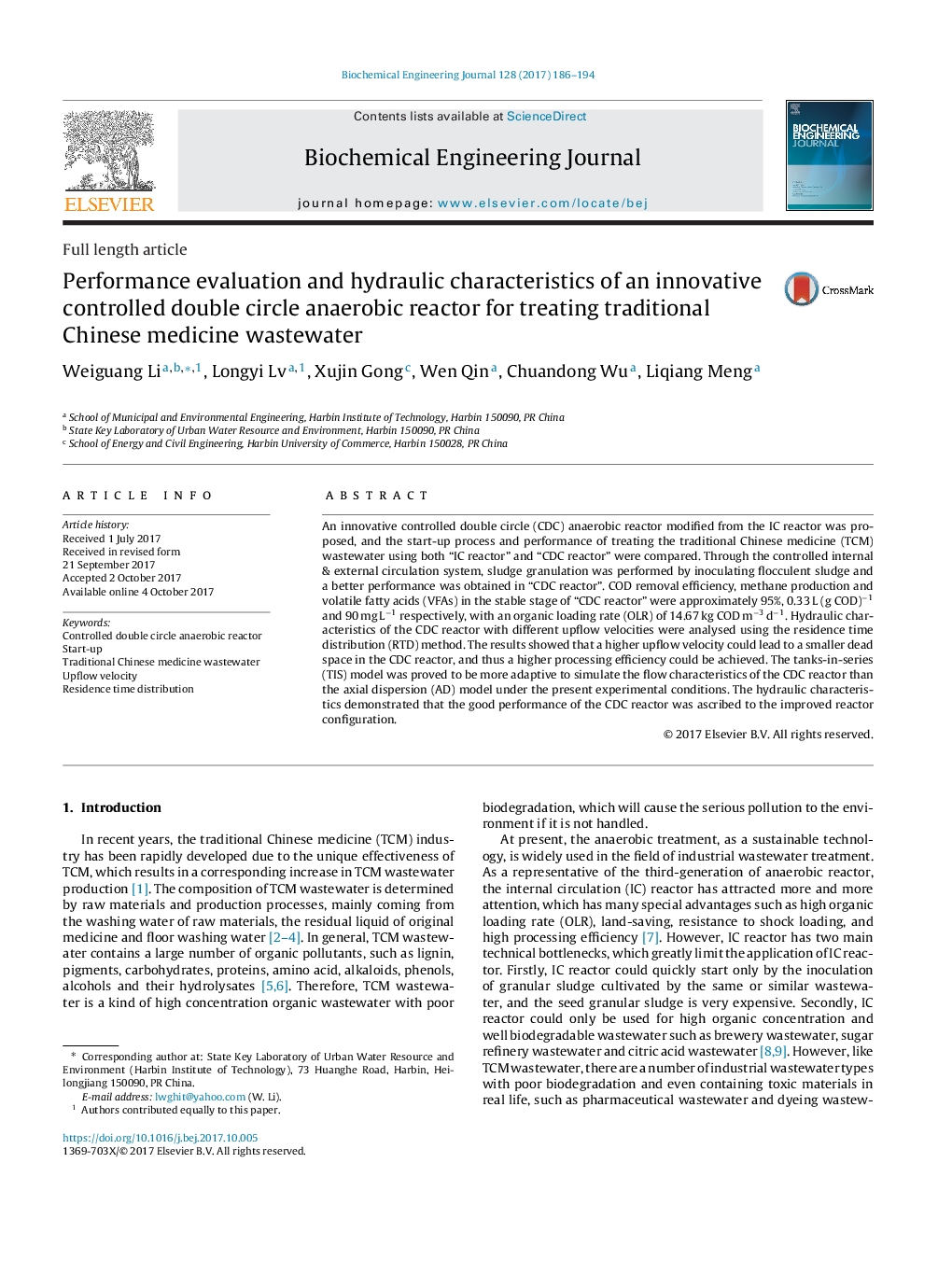| Article ID | Journal | Published Year | Pages | File Type |
|---|---|---|---|---|
| 4752031 | Biochemical Engineering Journal | 2017 | 9 Pages |
Abstract
An innovative controlled double circle (CDC) anaerobic reactor modified from the IC reactor was proposed, and the start-up process and performance of treating the traditional Chinese medicine (TCM) wastewater using both “IC reactor” and “CDC reactor” were compared. Through the controlled internal & external circulation system, sludge granulation was performed by inoculating flocculent sludge and a better performance was obtained in “CDC reactor”. COD removal efficiency, methane production and volatile fatty acids (VFAs) in the stable stage of “CDC reactor” were approximately 95%, 0.33 L (g COD)â1 and 90 mg Lâ1 respectively, with an organic loading rate (OLR) of 14.67 kg COD mâ3 dâ1. Hydraulic characteristics of the CDC reactor with different upflow velocities were analysed using the residence time distribution (RTD) method. The results showed that a higher upflow velocity could lead to a smaller dead space in the CDC reactor, and thus a higher processing efficiency could be achieved. The tanks-in-series (TIS) model was proved to be more adaptive to simulate the flow characteristics of the CDC reactor than the axial dispersion (AD) model under the present experimental conditions. The hydraulic characteristics demonstrated that the good performance of the CDC reactor was ascribed to the improved reactor configuration.
Related Topics
Physical Sciences and Engineering
Chemical Engineering
Bioengineering
Authors
Weiguang Li, Longyi Lv, Xujin Gong, Wen Qin, Chuandong Wu, Liqiang Meng,
